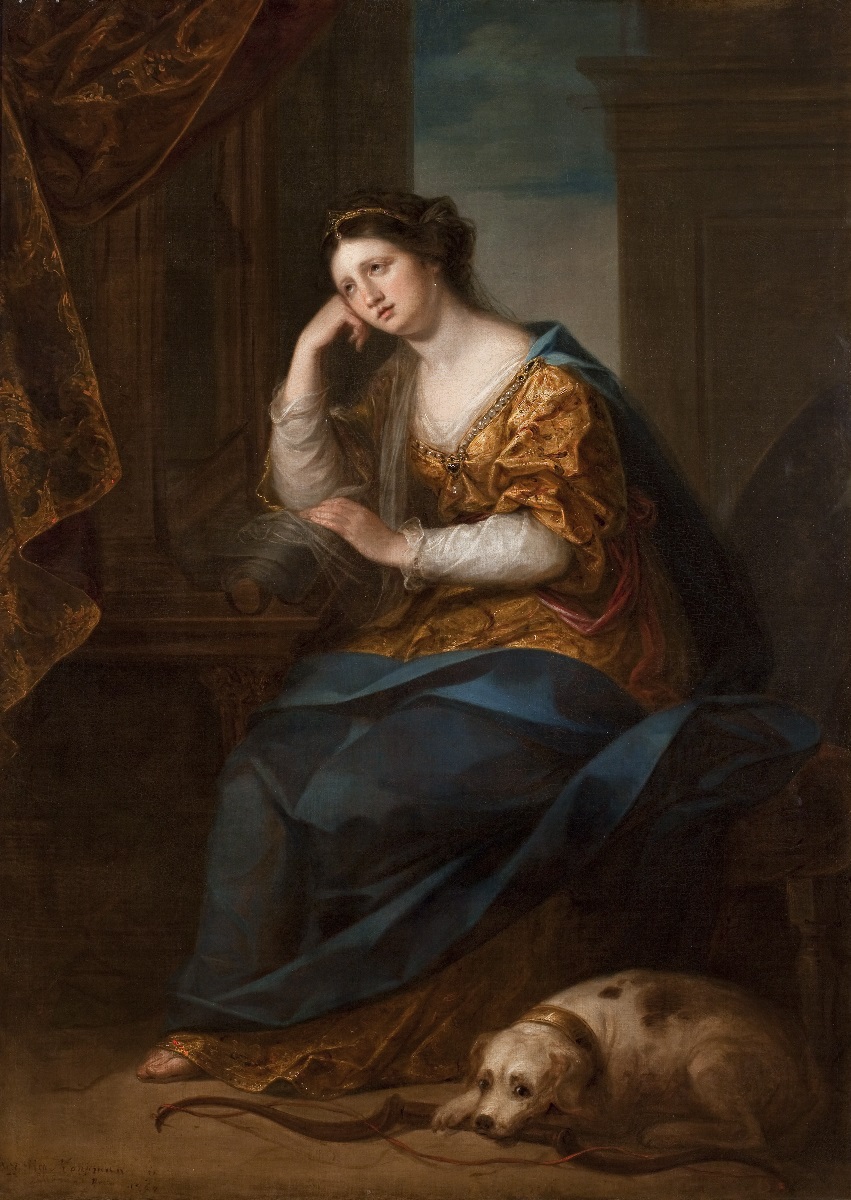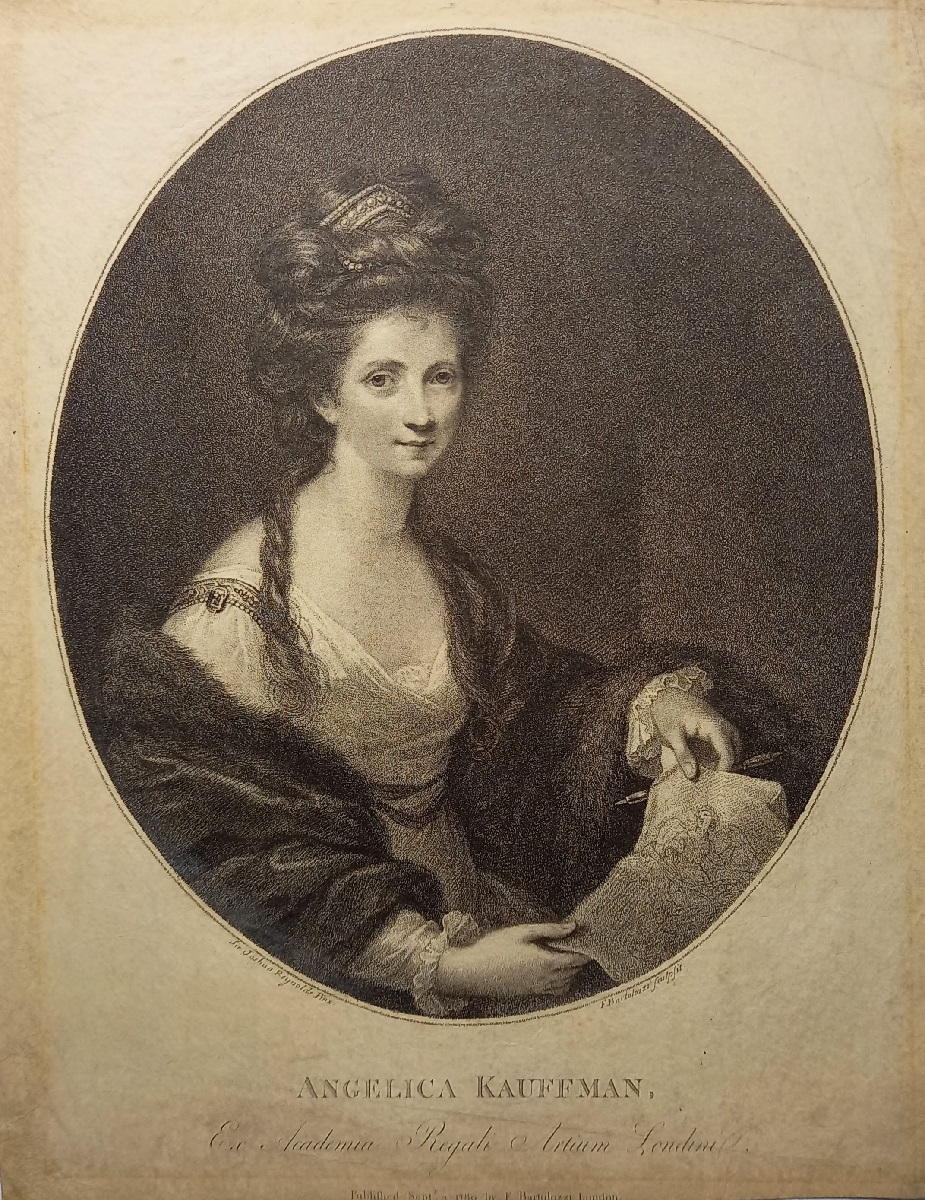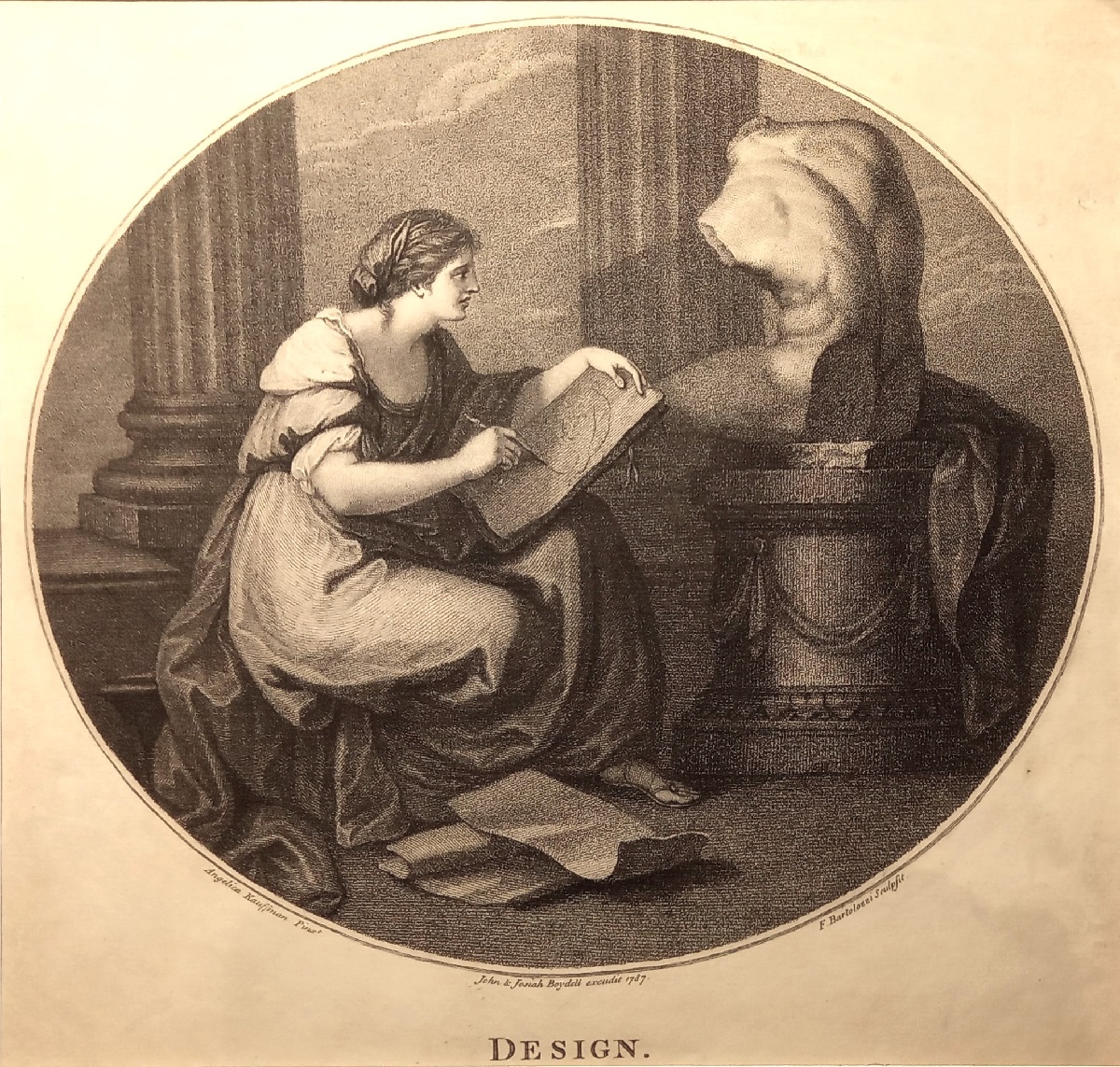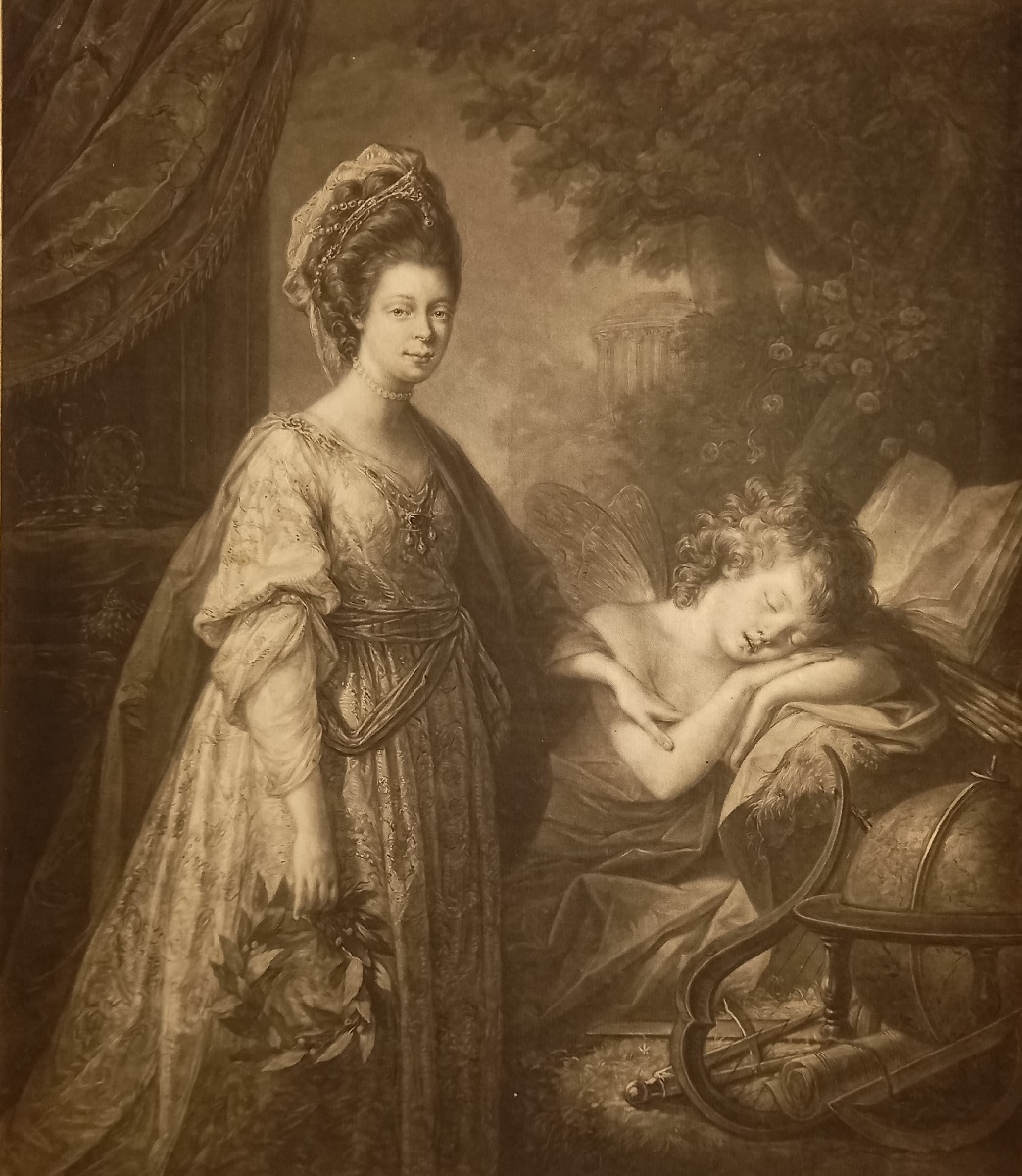Penelope goes on a journey of her own – Angelica Kauffman’s masterpieces in Brighton & Hove Museums’ collection

This week, a large exhibition of the multi-talented Swiss-German artist Angelica Kauffman (1741–1807), opens at the Royal Academy in London, and one of her most important paintings, Penelope at Her Loom, from our collection, is included in it.
It shows a character from Homer’s epic ancient Greek poem The Odyssey, a favourite subject matter of Kauffman and many of her contemporaries. It was painted when she was working in Rome in 1764, and marked the first time she portrayed Penelope, the wife of Odysseus, the mythical King of Ithaca. It is also her first figure painting of a single woman in an introspective pose.
Angelica Kauffman was born in 1741 in Chur, Switzerland, to German speaking parents, but grew up in Schwarzenberg in nearby Austria, frequently moving within the area linking Italy and countries north of the Alps. In the later 18th century she became a famous artist, celebrated across Europe.
A contemporary of Kauffman remarked in the 1780s that

The philosopher Johann Gottfried Herder described her as ‘a heavenly creature … perhaps the most cultivated woman in the whole of Europe.’ She spent fifteen hugely successful years (from 1766 to 1781) in London, which at the time was very attractive to continental painters because of its thriving intellectual scene and lucrative art market.
Clearly smitten, the actor David Garrick (who had had his portrait painted by ‘the celebrated Paintress, now in England’), published a short, gushing Poem for Angelica Kauffman in a London paper in January 1767, shortly after her arrival: ‘While thus you paint with Ease and Grace / And Spirit, all your own; / Take, if you please, my Mind and Face, / But let my Heart alone.’

Kauffman took the English art scene by storm, establishing herself as a portraitist, and later as a co-designer of Neo-classical interiors. Within a few months of her arrival, she had secured royal commissions and collaborated with Sir Joshua Reynolds, who intriguingly referred to her as ‘Miss Angel’ in his diaries.
There were rumours that he was in love with her and may even have proposed marriage. In 1768 she became one of only two female founding members of the Royal Academy, with Reynolds as the first President. In the famous painting by Zoffany (included in the Royal Academy exhibition) showing all founding members of the Academy in an imagined life drawing class with male nude models (Royal Collection, RCIN 400747), Kauffman and her friend Mary Moser – the other woman in the group – are depicted merely as portraits hanging on the wall.
Women were not allowed to attend life drawing classes, so even in an imagined setting they were banished from the room.

After Kauffman and Moser the Royal Academy did not elect any more women as full members until 1936 (!), when Laura Knight (another artist in our collection) was given full membership.
Finally, in 2019, for the first time in their 252-year history, the Royal Academy elected a female President, the abstract artist Rebecca Salter, under whose presidency Kauffman now gets her first major exhibition at the institution she helped establish. It was originally planned for 2020, but the Covid pandemic threw a spanner in the works, and the exhibition got stuck at its first leg in Düsseldorf, Germany, where I was lucky enough to see it between two lockdowns. Here in Brighton, we had honoured Kauffman much earlier: In 1992 Brighton Museum & Art Gallery staged an important exhibition of her work, Angelica Kauffman – A Continental Artist in Georgian England.

While Penelope is having her time in the spotlight at the Royal Academy in London, you can come and visit Brighton Museum to see some of our other works by Kauffman. Penelope is one of two large full-length portraits by Kauffman of seated women in our collection. Both paintings are likely to have come out of the context of the ‘Grand Tour’ and were probably commissioned by members of the aristocracy during their visits to Italy, or shortly after.
We don’t know who bought or commissioned them initially, but they were eventually donated to Hove Museum in 1937 by a Mrs Burges Watson. No records were kept about the donor or the circumstances of the donation, which is surprising, given the importance and size of these paintings. It is possible that some documentation was lost during evacuation precautions in Sussex during World War II.

Our other full-length Kauffman painting, Portrait of a Woman, is more mysterious than Penelope, as it shows neither an identified sitter, nor a classical figure, and for a while it was unclear whether the woman was wearing Turkish or Neapolitan dress.
In the 1770s Kauffman painted many women wearing orientalised dress, which was very popular, and for a while it was thought that this woman was also donning a Turkish or Greek costume. Recent research has shown that the lady is most probably dressed in Neapolitan rather than Turkish garb (in fact, my own connection with Brighton & Hove Museums began with this painting in 2006). Kauffman had an interest in local costume from early in her career, painting several self-portraits wearing traditional Swiss-German dress. The painting could be considered a costume painting, with the focus very much on her richly brocaded red and gold outfit and her jewellery, illustrating Kauffman’s own interest in the dress of local Italians during her stay in Naples.
If you look closely, you can just about see the Bay of Naples and Vesuvius in the background. Naples was one of the most popular destinations for British travellers in the 18th century. They were keen to educate themselves, buy art, visit the ruins of Pompeii and witness Vesuvius rumble. A near identical version of the painting is in Saltram House in Devon, acquired in the 1760s by John Parker, 1st Baron Boringdon, and his wife Theresa, who were great patrons of Kauffman. It was not unusual for an 18th century artist to create several versions or copies of an image.

Our third oil painting by Kauffman is the quarter-length portrait of Mrs Marriott. This painting is not as large and impressive as the other two, but of particular local interest, as it was Mrs Marriott who arranged for the building of the first six ‘Percy’ alms-houses at the bottom of Brighton’s Elm Grove in 1795, in memory of her two daughters, who had died tragically young.
It is this painting that makes me wonder whether Kauffman ever visited Sussex. Did she visit Mrs Marriott or her daughters in Brighton? Given that Kauffman had several clients in the south of England and lived in London, it seems likely that during her fifteen years here she would at some point have made the short journey to the closest ‘watering place’ to London. Sadly though, we have no written proof for this. Although Kauffman wrote many letters – in French, German, English, and Italian – much of her correspondence was destroyed or lost, and little survives from before 1781. We may not have evidence of Kauffman going for a dip in the sea in Sussex, but we can enjoy several splendid examples of her work here in Brighton Museum and other nearby collections, such as Petworth House and Goodwood in West Sussex.

We also have numerous prints after Kauffman’s works in our collections of works on paper, including etchings of the roundels she made for ceiling decorations in the Royal Academy, and a portrait of Queen Charlotte ‘raising the genius of the Fine Arts’. The angelic genius was possibly modelled on her eldest son, the future George IV – our very own “Prinny” – then a very young child. This is one of the few prints shown in the Royal Academy.
Kauffman’s time in England came to an end in 1781, when she married the Italian painter Antonio Zucchi and subsequently returned to Italy with him, continuing to earn a living as a highly sought after painter, receiving commissions from royal circles, and befriending many European artists and intellectuals, including Johann Wolfgang von Goethe.
She died in Rome in 1807, twelve years after her husband, and is buried in the Basilica di Sant’Andrea delle Fratte.
Angelica Kaufffman on display in Brighton Museum & Art Gallery
Portrait of a Woman can be found on the ground floor by the main staircase
Mrs Marriott can be found on the upper floor, just off the North Balcony
